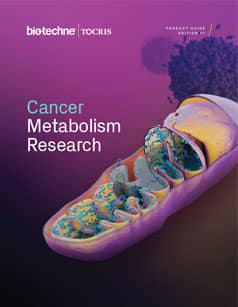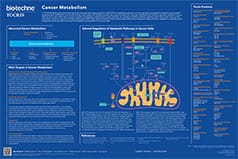Glutaminase
Glutaminase (GLS) is an aminohydrolase enzyme, EC 3.5.1.2, which catalyzes the conversion of the amino acid glutamine to glutamate. Two GLS isoforms have been identified to date, GLS1 (KGA; kidney-type glutaminase) and GLS2 (LGA; liver-type glutaminase).
Glutaminase Inhibitors |
|
|---|---|
| Cat. No. | 产品名称/活性 |
| 5301 | BPTES |
| Selective allosteric glutaminase (GLS1) inhibitor | |
| 7591 | CB 839 |
| Potent glutaminase GLS1 inhibitor | |
Glutaminase (GLS) is an aminohydrolase enzyme, EC 3.5.1.2, which catalyzes the conversion of the amino acid glutamine to glutamate. Two GLS isoforms have been identified to date, GLS1 (KGA; kidney-type glutaminase) and GLS2 (LGA; liver-type glutaminase). There is also a shorter splice variant of GLS1, named glutaminase C (GAC). GLS2 is predominantly expressed in the liver, whereas GLS1 and GAC have a ubiquitous tissue distribution.
GLS is activated by inorganic phosphate, which causes inactive dimers to form into active tetramers. Certain transcription factors and enzymes can also regulate GLS activity. The transcription factors c-Myc, NF-κB and STAT can all increase GLS1 expression, while the MEK-ERK signaling pathway stimulates GLS1 activity. GLS1 expression can be downregulated by the ubiquitin E3 ligase APC/C-cadherin complex.
GLS1 and GAC are localized to the mitochondrion, where the glutamate they produce is converted to α-ketoglutarate by glutamate dehydrogenase, which enters the citric acid (Krebs) cycle to form cycle intermediates. This process is crucial in cancer where cells become dependent on glutamine metabolism for the synthesis of amino acids, proteins, nucleotides and lipids, which are essential to drive rapid growth and proliferation. GLS1 expression has been shown to be upregulated in various types of tumor, including breast, lung, cervix and brain, with its expression correlating with malignancy. Glutaminase inhibitors have been shown to reduce the proliferation of these cancer cells in vitro, while having minimal effect on normal cells that don't have the same dependence on glutamine metabolism for their survival.
In the brain GLS is essential for the production of the excitatory neurotransmitter glutamate, and is critical for neuronal growth, differentiation and survival. Modulation of glutaminase levels in the brain has been linked to seizures.
External sources of pharmacological information for Glutaminase :
Literature for Glutaminase
Tocris offers the following scientific literature for Glutaminase to showcase our products. We invite you to request* your copy today!
*Please note that Tocris will only send literature to established scientific business / institute addresses.
Cancer Metabolism Research Product Guide
This product guide reviews some of the main areas in cancer metabolism research and lists around 150 products that can be used to investigate metabolic pathways in cancer including:
- Glycolysis
- Tricarboxylic Acid Cycle
- Lipidogenesis
- 1C Metabolism and Nucleic Acid Synthesis
- Drivers of Metabolic Reprogramming
- pH and Redox Balance
Cancer Metabolism Poster
This poster summarizes the main metabolic pathways in cancer cells and highlights potential targets for cancer therapeutics. Genetic changes and epigenetic modifications in cancer cells alter the regulation of cellular metabolic pathways providing potential cancer therapeutic targets.

